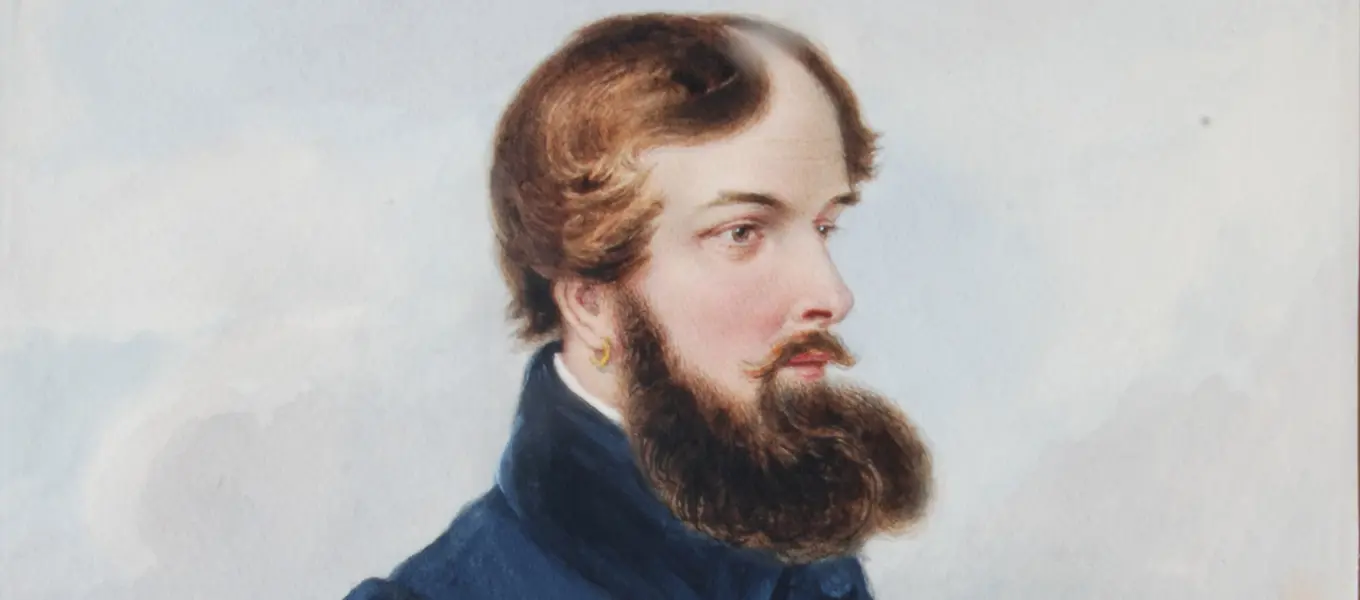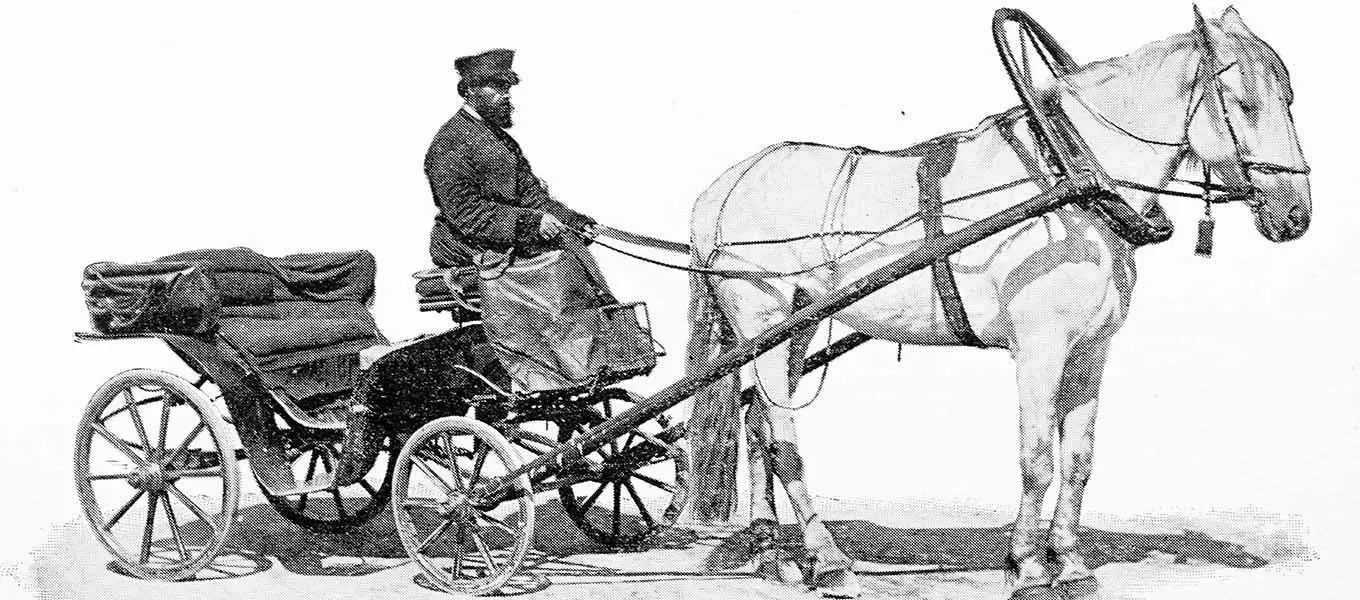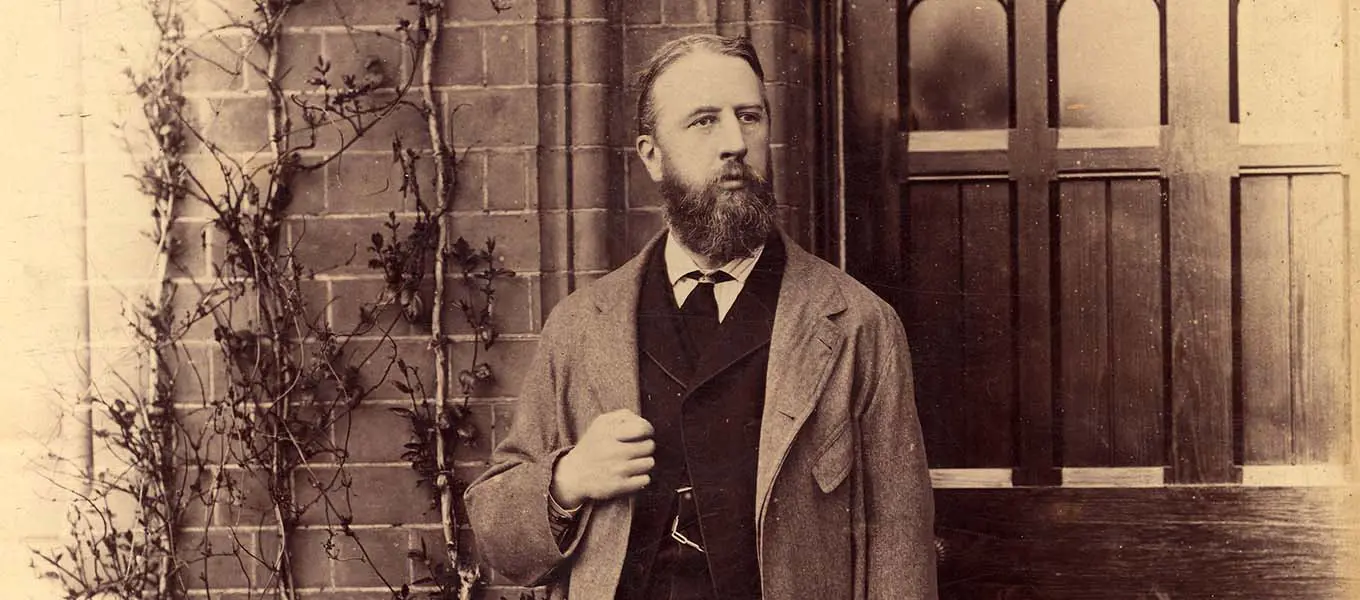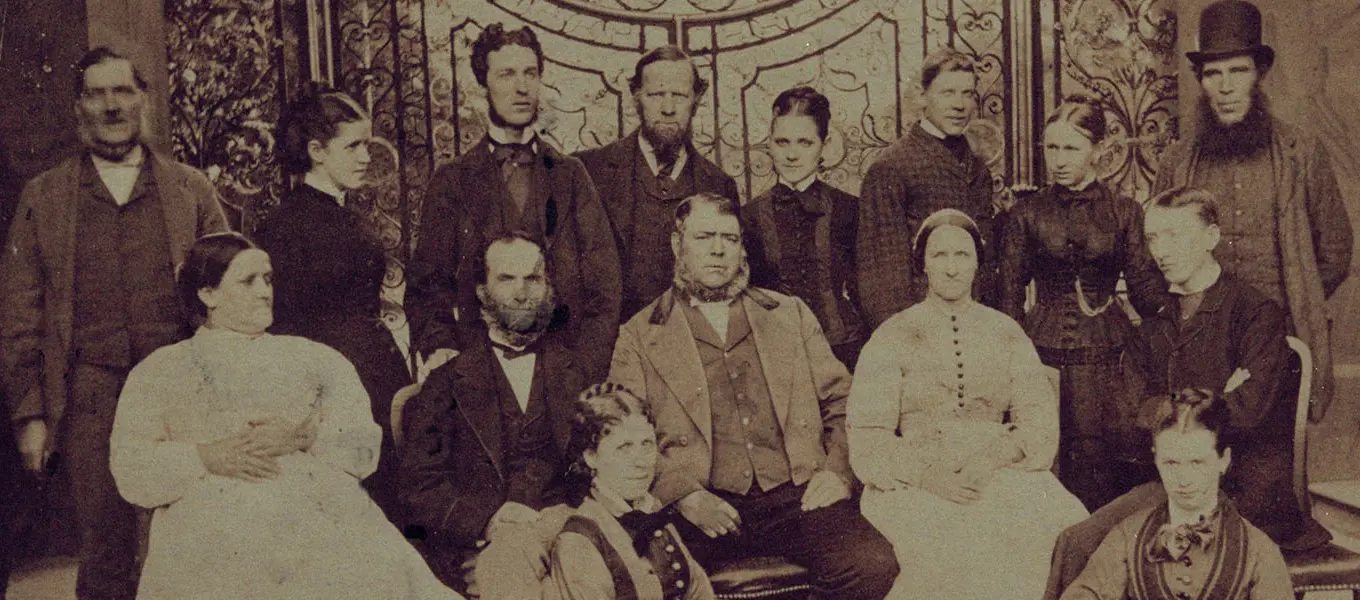In the late nineteenth century, a voluptuous chin curtain was a symbol of manliness, wisdom and good hygiene.
The bearded faces of Charles Darwin, Alfred Lord Tennyson and Charles Dickens seem so quintessentially nineteenth century that it is hard to imagine that, until the 1850s, full facial hair was viewed with suspicion and distaste.
Some facial hair was not uncommon, there are images in the archive of the 6th and 7th Dukes of Devonshire and other family members sporting smart 'chinstraps', long luxurious sideburns and modest moustaches, but full beards were only found in the margins of society, particularly among political radicals.

An Irish Chartist leader, Feargus O’Connor, was renowned for his shocking chin whiskers, and newspaper cartoons often depicted Chartists with unkempt facial hair.
With this in mind, it is not surprising that when a Russian coachman arrived at Chatsworth in 1826, his bushy beard caused quite a stir.

The 6th Duke of Devonshire first travelled to St Petersburg in 1817, and declared it ‘more beautiful than Paris’. In 1826 he returned for the coronation of his friend Nicolas I, after whom Chatsworth’s Emperor Fountain is named.
During this visit, the Emperor gifted him a Russian coach called a droshky. The Duke decided to employ a Russian coachman to drive it and brought both coach and driver back to Chatsworth.
At this time, the speed and skill of Russian coachmen in their native country had become legendary. As one of the oldest professions in the country, coach drivers made up a special caste in Russian society with skills handed down through generations. Russian coach drivers had to have strength and endurance, and be dependable.

Little is known about the life of the Duke's coachman before his arrival in England, including the correct spelling of his name. It varies in documents from ‘Peter Wisternough’ to ‘Peter Ustinowicz’ which leads us to conclude that he was illiterate and therefore probably did not know the original spelling himself. However, the name ‘Wisternoff’ stuck and was passed down to his descendants.
There is some evidence that Peter was ennobled and given a coat of arms in 1813 for service during the Napoleonic Wars. If so, his fortune did not last for in 1841 he wrote, ‘since I came to England I lost my house and property in Russia’.

Peter quickly became a favourite servant of the 6th Duke, who delighted in being seen with his eccentric coachman. The British public were similarly enchanted. One newspaper wrote in 1835:
’There is at present at Chatsworth, the seat of his Grace the Duke of Devonshire, a Russian coachman... He is habited in the costume of his country, which consists of a large coat, generally green, which is gathered in folds round the waist, crimson sash, with an ample flow of black beard’.
Even the young Princess Victoria was amused by his appearance. She wrote in her diary following a visit to Chatsworth in 1832, ‘We went to the stables where we saw some pretty ponies and a Russian coachman in his full dress’.
Peter's appearance was so commanding that he was asked to pose as one of the subjects in Bolton Abbey in the Olden Time by Sir Edwin Landseer, and can be seen kneeling with a stag along whilst two other men, both with impressive beards, look on.

It is less clear, however, how Peter was received by the other servants. In account books he is always referred to as ‘Peter the Russian’, or simply ‘The Russian Coachman’. Perhaps the language barrier and beard meant it took some time for Peter to be accepted below stairs?
Thankfully, Peter Wisternoff must have eventually felt at home in Derbyshire because on census night in 1841, he is recorded as being at the stables surrounded by his local-born wife and seven young children.
Between 1841 and 1851 Peter left Chatsworth, as the next census sees him living with his wife and family as 'a retired gentleman' on a 10-acre farm at Nether Handley near Staveley, where he later passed at the grand age of 82 years.
The figure of the ‘Russian coachman’ became as familiar as the French chef or the German governess during the nineteenth century. ‘Observe the stout Russian coachman’, an article declared in 1851, ‘with his thick black beard, and his high cap lined with fur... warming his hands by beating them together, or taking the ice from his beard’. He was even a popular choice of costume at fancy dress balls.
It is reasonable to believe that Chatsworth's Russian Coachman contributed to British society's growing obsession with facial hair and helped reinstate the beard as an acceptable sight on the well heeled streets of Victorian England.
However, it is most gratifying that, in spite of being cautious towards Peter at first, there is evidence that even Chatsworth's staff eventually followed his lead, as seen by the beards in this photo from the 1850's.

Main image - the bearded 8th Duke of Devonshire (1833 - 1906)






